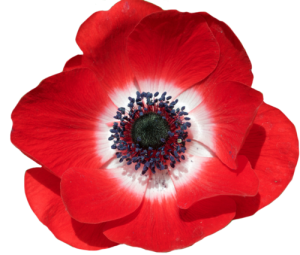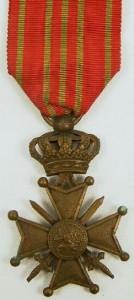Personal Details
William Henry Lea, born in Edstaston, Shropshire in 1893, the son of Thomas and Mary Ann Lea of Lower House Farm, Whixall, Whitchurch, Shropshire.
The 1911 Census shows William as a farm worker.
Military Details
Regiment : 11th Battalion Cheshire Regiment; formerly 2518 Shropshire Yeomanry
Rank : Sergeant
Service Number : 52874
Killed in action; France 22 March 1918 Aged 25
The World War I Croix de guerre was established by royal decree on 25 October 1915 as an award for bravery or other military virtue on the battlefield. It was only awarded to individuals. The Croix de guerre was not only awarded for bravery but also for three years or more of service on the front line, or for good conduct on the battlefield. It was also awarded to volunteers older than 40 or younger than 16 after a minimum of 18 months of service, to escaped prisoners of war rejoining the armed forces, and to military personnel who were placed on inactive duty because of injury.
Click on the tag below to see details of each recipient.

The British War Medal (also known as 'Squeak') was a silver or bronze medal awarded to officers and men of the British and Imperial Forces who either entered a theatre of war or entered service overseas between 5th August 1914 and 11th November 1918 inclusive. This was later extended to services in Russia, Siberia and some other areas in 1919 and 1920. Approximately 6.5 million British War Medals were issued. Approximately 6.4 million of these were the silver versions of this medal. Around 110,000 of a bronze version were issued mainly to Chinese, Maltese and Indian Labour Corps. The front (obv or obverse) of the medal depicts the head of George V. The recipient's service number, rank, name and unit was impressed on the rim.
The Allied Victory Medal (also known as 'Wilfred') was issued by each of the allies. It was decided that each of the allies should each issue their own bronze victory medal with a similar design, similar equivalent wording and identical ribbon. The British medal was designed by W. McMillan. The front depicts a winged classical figure representing victory. Approximately 5.7 million victory medals were issued. Interestingly, eligibility for this medal was more restrictive and not everyone who received the British War Medal ('Squeak') also received the Victory Medal ('Wilfred'). However, in general, all recipients of 'Wilfred' also received 'Squeak' and all recipients of The 1914 Star or The 1914/1915 Star (also known as 'Pip') also received both 'Squeak' and 'Wilfred'. The recipient's service number, rank, name and unit was impressed on the rim.
Further Information
If you can provide any further information on William Henry Lea please get in touch by leaving a comment below, using our Contact Form or by calling in to Whitchurch Heritage Centre.
Information provided by Whitchurch Museum and Archives



